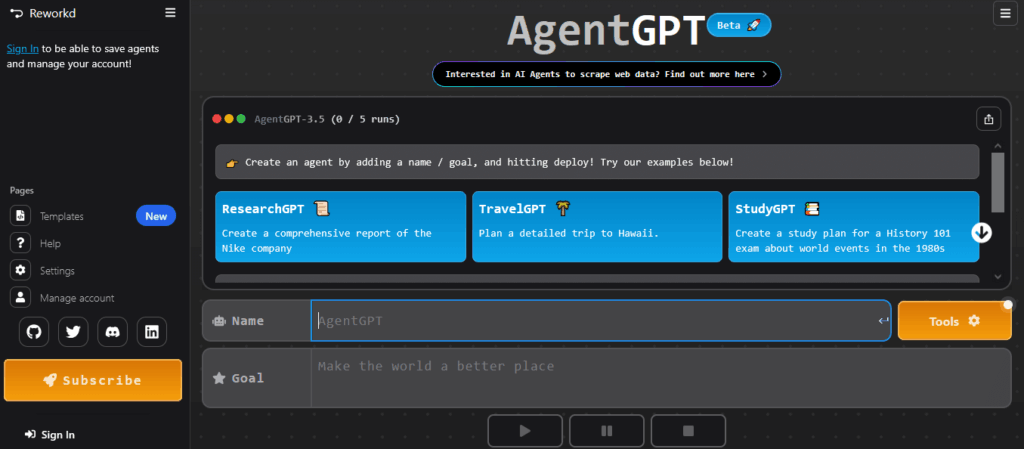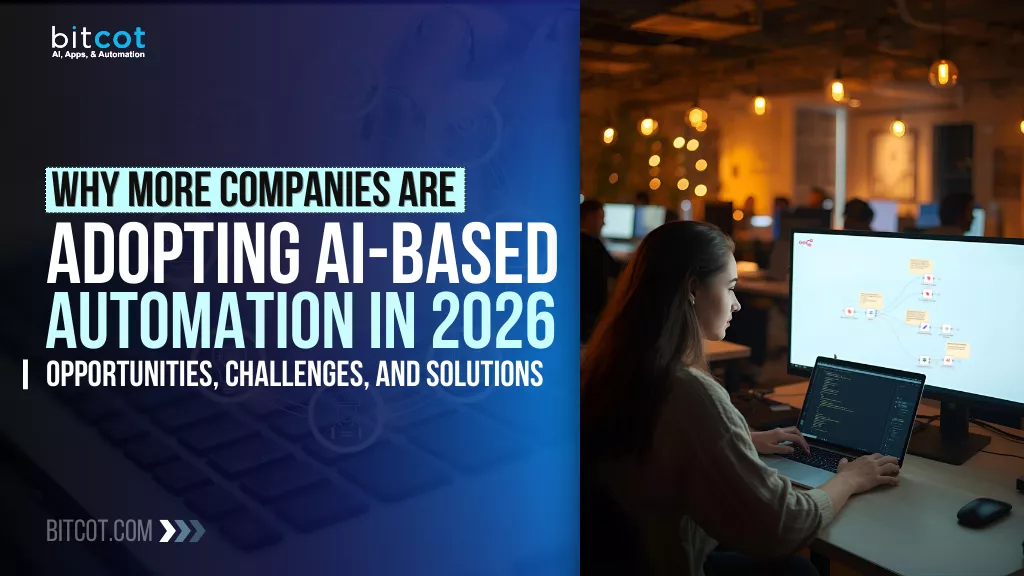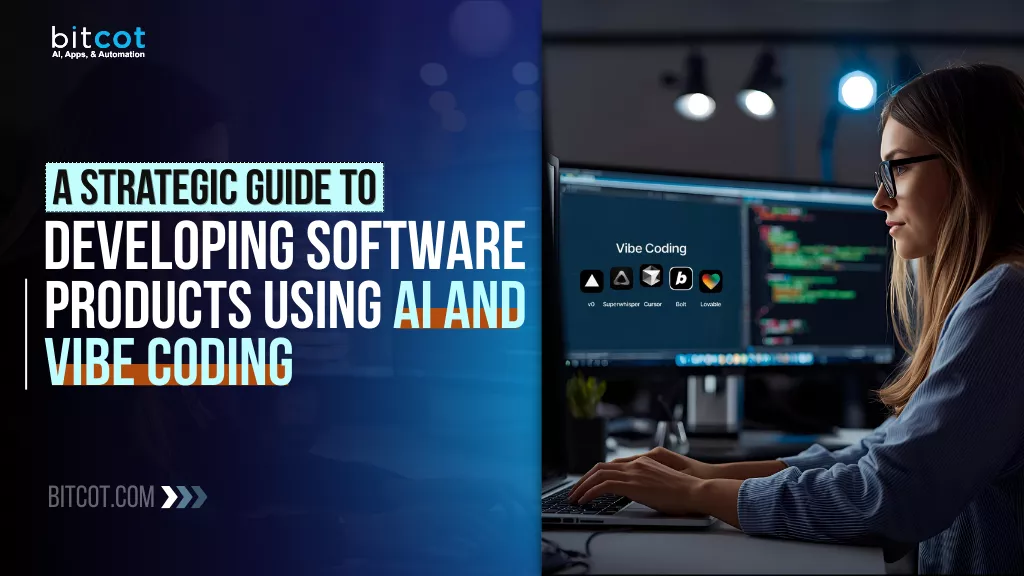
What if your enterprise applications could think, collaborate, and solve problems like your best team – but never sleep, never make emotional decisions, and scale infinitely?
Enterprise applications are drowning in complexity while businesses desperately seek intelligent automation solutions that can handle sophisticated workflows across multiple departments. Traditional software development approaches fall short when organizations need systems that can think, adapt, and collaborate like human teams.
The challenge intensifies when companies realize their current automation tools lack the intelligence to handle nuanced decision-making, cross-functional communication, and real-time problem-solving. Manual processes continue consuming valuable resources while competitors leverage advanced AI systems to streamline operations, reduce costs, and accelerate growth.
Multi-agent AI frameworks represent the breakthrough solution enterprises need. These sophisticated platforms enable businesses to deploy intelligent agents that collaborate seamlessly, automate complex workflows, and deliver unprecedented operational efficiency.
As an AI Automation Agency, understanding these frameworks becomes crucial for building next-generation enterprise applications that transform business operations.
What Are AI Agent Frameworks and Why Do They Matter for Enterprise Success?
AI agent frameworks provide comprehensive platforms for developing intelligent software agents capable of autonomous decision-making, task execution, and inter-agent collaboration. Unlike traditional automation tools, these frameworks create sophisticated ecosystems where multiple AI agents work together to solve complex business problems.
Modern enterprises require systems that can adapt to changing conditions, learn from interactions, and coordinate across departments without constant human intervention. Multi-agent architectures address these needs by distributing intelligence across specialized agents, each designed for specific business functions while maintaining seamless communication protocols.
The enterprise value proposition centers on scalability, adaptability, and intelligence integration. Organizations can deploy specialized agents for customer service, inventory management, financial analysis, and operational monitoring, all working within a unified framework that ensures consistent performance and strategic alignment.
How Multi-Agent Systems Transform Enterprise Operations
Multi-agent systems revolutionize enterprise operations by creating intelligent networks where specialized agents handle distinct business functions while collaborating toward common organizational objectives. Each agent operates autonomously within defined parameters while sharing information and coordinating actions with other system components.
The transformation occurs through distributed intelligence deployment. Complex business processes get decomposed into manageable tasks assigned to specialized agents. Customer service agents handle inquiries while escalating complex issues to human experts, inventory agents monitor supply levels while coordinating with procurement systems, and analytical agents process data while generating actionable insights.
This approach eliminates traditional bottlenecks associated with centralized processing systems. Instead of overwhelming single applications with diverse requirements, enterprises can deploy focused agents that excel in specific domains while maintaining system-wide coherence through standardized communication protocols.
Why Choose Multi-Agent Frameworks Over Traditional Automation Solutions?
Traditional automation solutions operate through rigid, predefined workflows that struggle with exceptions, edge cases, and dynamic business environments. Multi-agent frameworks provide adaptive intelligence that responds to changing conditions, learns from experience, and optimizes performance through continuous improvement cycles.
The key advantage lies in distributed problem-solving capabilities. When traditional systems encounter unexpected scenarios, they typically fail or require human intervention. Multi-agent systems can redistribute tasks, seek alternative solutions, and maintain operational continuity through collaborative problem-solving approaches.
Enterprise scalability becomes significantly more manageable with multi-agent architectures. Organizations can add new agents for emerging business requirements without restructuring existing systems. This modular approach reduces implementation complexity while providing flexibility for future growth and adaptation.
Top 10 AI Agent Frameworks for Enterprise Application Development
Below, you’ll find the top 10 AI agent frameworks for building enterprise-grade applications in 2025. Each has been selected based on real-world performance, architecture flexibility, integrations, and enterprise adoption.
1. LangChain

LangChain stands as the most comprehensive framework for building language model applications with agent capabilities. The platform provides extensive libraries for creating conversational agents, document processing systems, and complex reasoning workflows.
Enterprise applications benefit from LangChain’s robust integration ecosystem, supporting major language models, vector databases, and external APIs. The framework excels in natural language processing tasks, making it ideal for customer service automation, content generation, and intelligent document management systems.
Key Features:
- Extensive integration with multiple LLM providers including OpenAI, Anthropic, and Hugging Face models
- Built-in memory management systems for maintaining conversation context across sessions
- Comprehensive chain and agent templates for rapid development and deployment
- Vector database integration for semantic search and retrieval-augmented generation capabilities
- Robust debugging and monitoring tools with detailed logging and performance analytics
2. AutoGen

Microsoft’s AutoGen framework specializes in multi-agent conversation systems where different agents assume distinct roles within collaborative workflows. The platform enables sophisticated agent interactions through structured conversation patterns and role-based decision-making processes.
Enterprise scenarios particularly benefit from AutoGen’s ability to simulate complex organizational structures within AI systems. Teams can deploy agents representing different departments, expertise areas, or decision-making levels, creating intelligent systems that mirror human organizational dynamics.
Key Features:
- Role-based agent configuration with customizable personas and specialized capabilities
- Advanced conversation management with turn-taking, interruption handling, and context preservation
- Built-in code execution and verification capabilities for technical workflow automation
- Flexible termination conditions and conversation flow control mechanisms
- Integration with Azure OpenAI services and enterprise security protocols
3. CrewAI

CrewAI focuses on creating collaborative agent teams that work together toward common objectives. The framework provides structured approaches for defining agent roles, responsibilities, and collaboration protocols within enterprise environments.
The platform excels in project management scenarios where multiple specialized agents contribute different capabilities toward complex deliverables. Marketing teams can deploy content creation agents working alongside analysis agents and distribution agents to create comprehensive campaign management systems.
Key Features:
- Hierarchical team structures with defined roles, responsibilities, and reporting relationships
- Task delegation and workflow orchestration with automatic load balancing capabilities
- Real-time collaboration tools including shared memory and inter-agent communication protocols
- Performance monitoring and analytics with individual and team-based metrics tracking
- Customizable agent personalities and communication styles for enhanced team dynamics
4. LangGraph

LangGraph provides graph-based approaches to agent workflow design, enabling complex decision trees and conditional logic within multi-agent systems. The framework excels in scenarios requiring sophisticated state management and branching logic.
Enterprise applications benefit from LangGraph’s visual workflow design capabilities, allowing technical and non-technical stakeholders to understand and modify agent behaviors through intuitive graph representations.
Key Features:
- Visual workflow designer with drag-and-drop interface for creating complex agent decision trees
- State management system that maintains context across multiple workflow branches and iterations
- Conditional logic nodes with customizable decision criteria and dynamic routing capabilities
- Integration with popular machine learning frameworks and external API services
- Version control and rollback functionality for workflow management and deployment safety
5. AgentGPT

AgentGPT offers autonomous agent capabilities that can pursue long-term objectives through iterative task decomposition and execution. The platform provides goal-oriented agent development focused on achievement-based performance metrics.
Enterprise applications particularly benefit from AgentGPT’s persistence capabilities, enabling agents to work on complex projects over extended periods while maintaining context and progress tracking.
Key Features:
- Autonomous goal pursuit with intelligent task decomposition and priority management
- Persistent memory systems that maintain context and learning across extended operations
- Web browsing and research capabilities for real-time information gathering and analysis
- File generation and manipulation tools for document creation and data processing tasks
- Performance analytics dashboard with goal achievement tracking and optimization recommendations
6. Semantic Kernel

Microsoft’s Semantic Kernel provides enterprise-grade agent development capabilities with strong integration to Microsoft’s ecosystem and enterprise security standards. The framework emphasizes production-ready deployment with comprehensive monitoring and management tools.
Enterprise organizations benefit from Semantic Kernel’s enterprise security features, compliance capabilities, and seamless integration with existing Microsoft infrastructure and services.
Key Features:
- Enterprise-grade security with Azure Active Directory integration and role-based access control
- Native integration with Microsoft 365, Teams, and Azure services for seamless workflow connectivity
- Plugin architecture supporting custom skills and third-party service integrations
- Comprehensive logging and audit trails for compliance and governance requirements
- Multi-language support including C#, Python, and Java for diverse development environments
7. Haystack

Haystack specializes in building search and question-answering systems with agent capabilities, making it ideal for knowledge management and information retrieval applications within enterprise environments.
The framework excels in scenarios where agents need to process large document repositories, extract relevant information, and provide intelligent responses based on organizational knowledge bases.
Key Features:
- Advanced document processing pipeline with support for multiple file formats and content types
- Semantic search capabilities using vector embeddings and similarity matching algorithms
- Question-answering system with context-aware response generation and source attribution
- Scalable indexing and retrieval system optimized for large enterprise document collections
- REST API endpoints for easy integration with existing applications and enterprise systems
8. Rasa

Rasa provides open-source conversational AI capabilities with strong customization options for enterprise deployment. The framework enables organizations to build sophisticated AI Chatbot Development solutions with complete data control and privacy protection.
Enterprise scenarios benefit from Rasa’s on-premises deployment capabilities, ensuring sensitive business data remains within organizational boundaries while maintaining advanced conversational intelligence.
Key Features:
- Open-source architecture with full customization control and no vendor lock-in restrictions
- On-premises deployment options ensuring complete data privacy and security compliance
- Natural language understanding with intent recognition and entity extraction capabilities
- Dialogue management system with contextual conversation flow and state tracking
- Integration APIs for connecting with existing CRM, helpdesk, and enterprise communication systems
9. Botpress

Botpress offers comprehensive bot development platforms with visual design tools and enterprise deployment capabilities. The framework provides user-friendly interfaces for creating sophisticated conversational agents without extensive programming requirements.
The platform excels in scenarios where non-technical stakeholders need to contribute to agent development and maintenance, democratizing AI agent creation across organizational departments.
Key Features:
- Visual conversation designer with intuitive drag-and-drop interface for non-technical users
- Multi-channel deployment supporting web, mobile, messaging platforms, and voice assistants
- Built-in analytics dashboard with conversation insights, user engagement metrics, and performance tracking
- Enterprise-grade security features including user authentication, data encryption, and access controls
- Extensive integration marketplace with pre-built connectors for popular business applications and services
10. OpenAI Assistants API

OpenAI’s Assistants API provides direct access to advanced language model capabilities with built-in tool usage and function calling features. The platform enables rapid development of intelligent agents with state-of-the-art natural language processing capabilities.
Enterprise organizations benefit from the API’s reliability, performance, and continuous improvement through OpenAI’s ongoing model development and optimization efforts.
Key Features:
- State-of-the-art language models with advanced reasoning and problem-solving capabilities
- Built-in function calling system for seamless integration with external APIs and business systems
- Persistent conversation threads with automatic context management and memory retention
- Code interpreter functionality for data analysis, visualization, and computational tasks
- File upload and processing capabilities supporting documents, images, and structured data formats
How to Choose the Right Framework for Your Enterprise Needs
Framework selection depends on specific enterprise requirements, technical capabilities, and strategic objectives. Organizations should evaluate factors including integration requirements, security needs, scalability demands, and development team expertise when making framework decisions.
Technical considerations include programming language preferences, existing infrastructure compatibility, and deployment environment requirements. Some frameworks excel in cloud-native environments while others provide better on-premises deployment options.
Business considerations encompass time-to-market requirements, budget constraints, and long-term strategic alignment. Artificial Intelligence Development Company partnerships can provide valuable guidance in framework selection and implementation planning.
What Implementation Strategies Ensure Multi-Agent Success?
Successful multi-agent implementation requires careful planning, phased deployment, and continuous optimization approaches. Organizations should begin with pilot projects that demonstrate value while building internal expertise and confidence in multi-agent technologies.
The implementation strategy should address change management, training requirements, and integration challenges with existing business processes. Success depends on stakeholder buy-in, clear success metrics, and adaptive project management approaches that accommodate learning and iteration.
Technical implementation considerations include infrastructure requirements, security protocols, and monitoring systems that ensure reliable agent performance and business value delivery.
Why Partner with AI Automation Experts for Framework Implementation?
Multi-agent framework implementation involves complex technical and business considerations that benefit from specialized expertise. Professional AI Automation Agency partnerships provide access to proven methodologies, implementation experience, and ongoing support capabilities.
Expert partnerships accelerate implementation timelines while reducing risks associated with technology adoption and organizational change. Experienced teams understand common pitfalls, best practices, and optimization strategies that ensure successful multi-agent deployment.
The strategic value of professional partnerships extends beyond initial implementation to include ongoing optimization, scaling support, and adaptation to evolving business requirements and technological advances.
How Multi-Agent Frameworks Drive Future Enterprise Innovation
Multi-agent frameworks represent foundational technologies for next-generation enterprise applications that combine artificial intelligence, automation, and collaborative intelligence. Organizations investing in these capabilities position themselves for competitive advantages in efficiency, adaptability, and innovation capacity.
Future enterprise applications will increasingly rely on intelligent agent networks that can handle complex business scenarios, adapt to changing conditions, and deliver consistent value across diverse operational contexts. Generative AI Integration Services will play crucial roles in connecting these frameworks with broader AI ecosystems.
The evolution toward intelligent enterprises requires foundational investments in multi-agent technologies, organizational capabilities, and strategic partnerships that enable continuous innovation and adaptation in dynamic business environments.
Final Thoughts
The future of enterprise software lies in intelligent multi-agent systems that can think, adapt, and collaborate at unprecedented scales. Organizations that embrace these frameworks today position themselves for competitive advantages that extend far beyond simple automation benefits.
The investment in multi-agent technology represents a strategic commitment to building adaptive, intelligent organizations capable of thriving in an increasingly complex business landscape. Start with pilot projects, build internal expertise, and scale systematically to maximize return on investment.
Ready to transform your enterprise with multi-agent AI systems? Bitcot specializes in developing custom AI solutions that drive measurable business results. Our expert team has successfully implemented multi-agent frameworks across diverse industries.
Let’s talk about your multi-agent AI vision. Whether you’re exploring initial automation opportunities or planning comprehensive digital transformation, Bitcot’s expertise ensures your investment delivers exceptional returns. Contact us today to discover how multi-agent frameworks can revolutionize your business operations and accelerate growth in 2025.
Frequently Asked Questions
What are the main differences between single-agent and multi-agent frameworks?
Single-agent frameworks focus on individual AI agents handling specific tasks, while multi-agent frameworks enable multiple specialized agents to collaborate and coordinate complex workflows. Multi-agent systems provide better scalability, fault tolerance, and can handle more sophisticated business processes through distributed intelligence.
How do multi-agent frameworks integrate with existing enterprise systems?
Multi-agent frameworks typically provide APIs, webhooks, and standard integration protocols that connect with existing enterprise systems. Most frameworks support common enterprise technologies including databases, CRM systems, ERP platforms, and communication tools, enabling seamless integration without major infrastructure changes.
What security considerations are important for enterprise multi-agent deployment?
Enterprise multi-agent systems require robust authentication, authorization, and audit capabilities. Key security considerations include data encryption, secure communication protocols, access control mechanisms, compliance with industry regulations, and monitoring systems that track agent activities and data usage.
How much technical expertise is required to implement multi-agent frameworks?
Technical expertise requirements vary by framework, with some platforms offering visual design tools for non-technical users while others require programming knowledge. Most successful implementations benefit from collaboration between business stakeholders and technical teams, with many organizations partnering with AI tools specialists for initial deployment.
What are the typical costs associated with multi-agent framework implementation?
Implementation costs depend on framework choice, complexity requirements, and deployment scale. Factors include licensing fees, development resources, infrastructure requirements, training costs, and ongoing maintenance. Many frameworks offer flexible pricing models including open-source options, cloud-based pricing, and enterprise licensing agreements.
How do multi-agent systems handle failure recovery and reliability?
Multi-agent systems typically include built-in redundancy, error handling, and recovery mechanisms. When individual agents fail, other agents can often compensate or take over critical functions. Most frameworks provide monitoring, logging, and alert systems that enable rapid problem identification and resolution.
Can multi-agent frameworks be applied to specific industries like healthcare?
Yes, multi-agent frameworks are highly adaptable to industry-specific requirements. AI Agents for Healthcare applications include patient monitoring, diagnostic assistance, treatment coordination, and administrative automation. Each industry benefits from specialized agent configurations that understand domain-specific requirements and regulations.
What performance metrics should organizations track for multi-agent systems?
Key performance metrics include task completion rates, response times, accuracy measurements, system uptime, resource utilization, and business impact indicators. Organizations should also track agent collaboration effectiveness, learning progression, and adaptation capabilities to ensure continuous improvement and value delivery.












